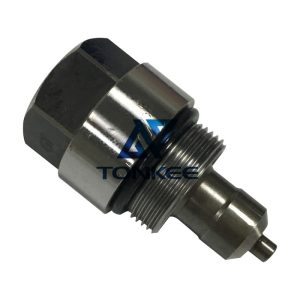
Pressure Rating: The PC cavitation valve should be capable of withstanding the maximum pressure of the system it is installed in.
It should have a pressure rating that matches or exceeds the system's requirements.
Flow Capacity: The valve's flow capacity determines the maximum flow rate it can handle without causing excessive pressure drop. It is crucial to select a PC cavitation valve with an adequate flow capacity to ensure optimal system performance.
Material Construction: The valve should be constructed from materials that can withstand the specific operating conditions, including temperature, pressure, and fluid composition. Common materials used for PC cavitation valves include stainless steel, cast iron, and various alloys.
Valve Type: PC cavitation valves are available in different types, including globe valves, butterfly valves, and control valves. The choice of valve type depends on factors such as the required flow control accuracy, pressure drop limitations, and system compatibility.
Control Mechanism: PC cavitation valves can be manually operated or equipped with automatic control mechanisms. Manual valves require human intervention for adjustment, while automatic valves can be controlled by sensors, actuators, or programmable logic controllers (PLCs) to maintain desired pressure levels.
Cavitation Resistance: The valve should be designed to minimize or eliminate cavitation effects. Features such as streamlined flow paths, flow restrictors, and special trim designs can help reduce cavitation and the resulting damage.
Leakage Rate: The leakage rate of the valve, commonly specified as a class rating, determines the amount of fluid that can bypass the closed valve.
Lower leakage rates are generally preferred for improved system efficiency.
Maintenance and Serviceability: Consider the ease of maintenance and availability of spare parts when selecting a PC cavitation valve. Valves with simple designs, accessible internals, and readily available replacement parts can minimize downtime and maintenance costs.
Compliance and Certification: Ensure that the PC cavitation valve complies with relevant industry standards and certifications, such as ISO, ANSI, API, or specific safety regulations. Compliance ensures the valve's reliability, performance, and safety in the intended application.
Documentation and Support: The manufacturer should provide comprehensive documentation, including technical specifications, installation guidelines, maintenance instructions, and troubleshooting support. Access to technical support from the manufacturer or authorized distributors can be crucial for addressing any issues that may arise.


